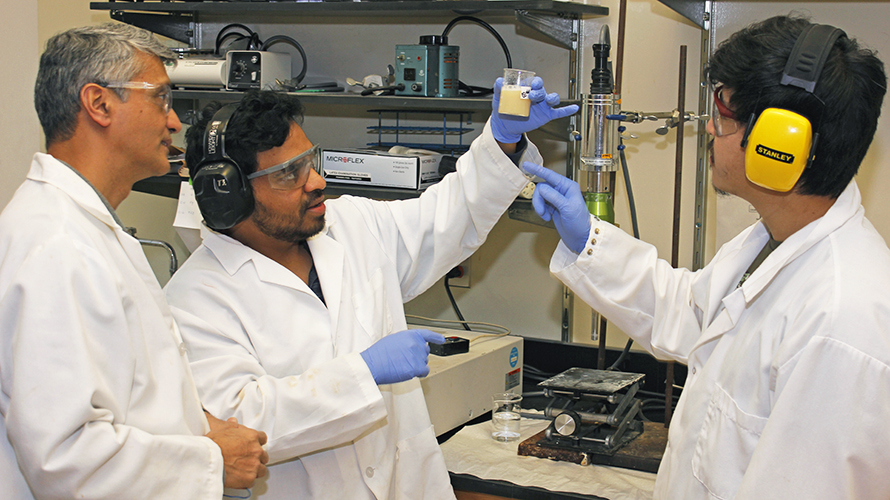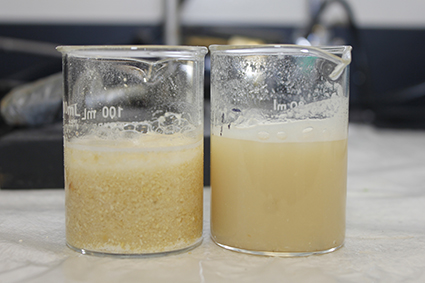Getting the most protein out of legumes and oilseeds
Student News
Research News
ISU News
12/11/2019

Associate Professor Buddhi Lamsal and graduate students Mahfuz Rahman and Bibek Byanju have been researching methods to increase the amount of protein extracted from legumes particularly soybeans. Conventional methods allow 50 percent of the protein to be extracted but the Iowa State researchers are hoping to get closer to 70 percent using high power sonication. Photo by Whitney Baxter

